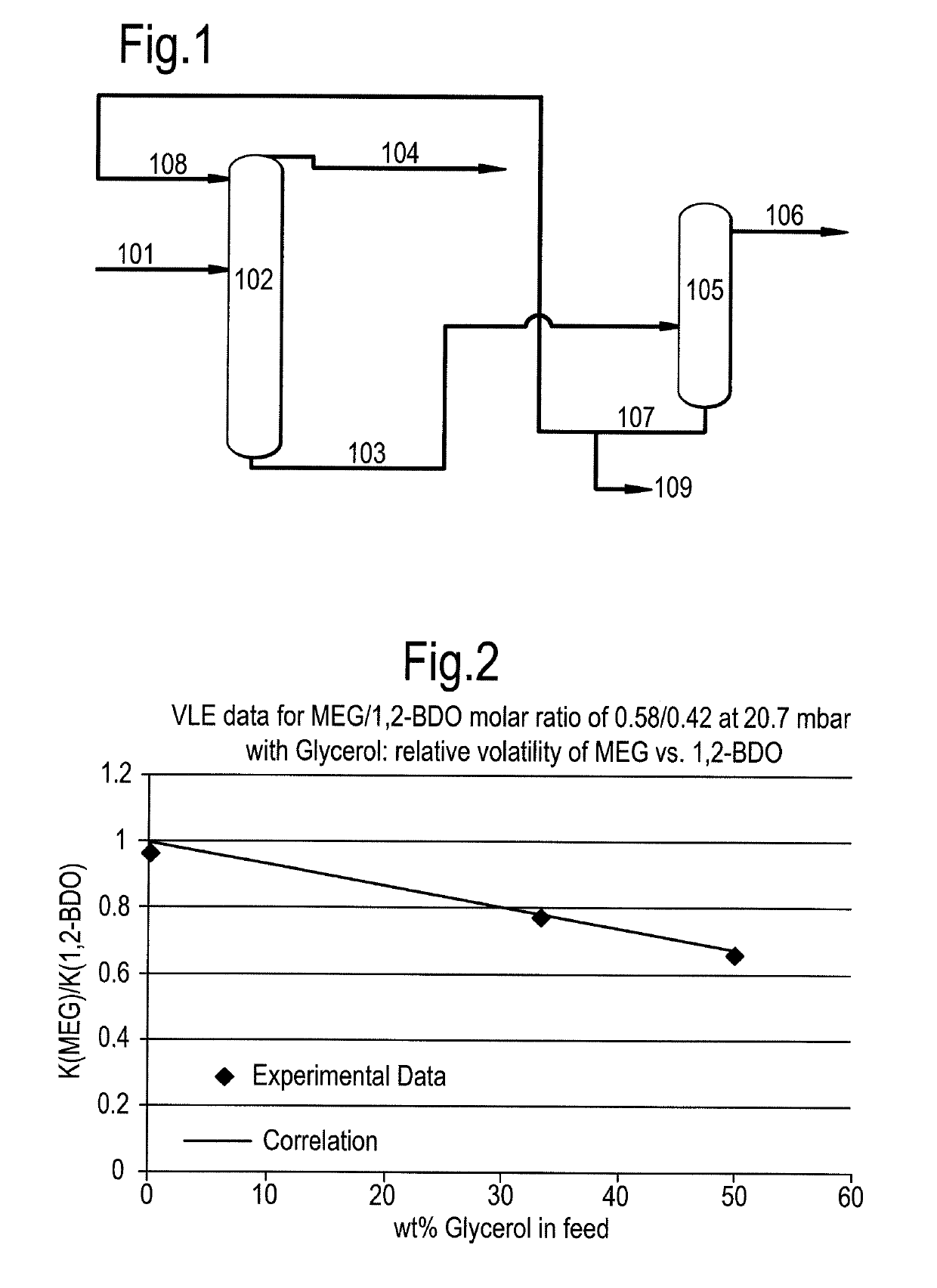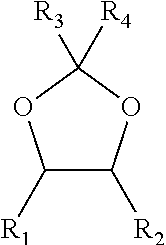Process for the separation of glycols using glycerol
a technology of glycerol and glycol, which is applied in the direction of separation processes, organic chemistry, chemistry apparatus and processes, etc., can solve the problems of complex fractional distillation separation of these glycols, high cost of process both in terms of capital and operational expenditure, and high cost of decomposition of desired glycol products
- Summary
- Abstract
- Description
- Claims
- Application Information
AI Technical Summary
Benefits of technology
Problems solved by technology
Method used
Image
Examples
example 1
[0038]Isobaric Vapour-Liquid Equilibrium (VLE) data were measured by means of a dynamic method using a Swietoslawski ebulliometer as described by Rogalski and Malanowski, Fluid Phase Equilib. 5 (1980) 97-112. At a given pressure, which is regulated by an electronic pressure control, the boiling temperature of a mixture can be measured. When phase equilibrium is reached, i.e. a stable circulation is achieved and the boiling temperature is constant, the concentrations of both phases in equilibrium can be determined by taking samples from the liquid and the condensed vapour phase and gas chromatographic analysis. Such data correspond to the separation on one theoretical plate in a distillation column.
[0039]For the ternary system MEG+1,2-BDO+glycerol isobaric VLE data were measured at 20.7 mbar with fixed glycerol feed concentrations (33.3 wt. % and 50 wt. %, respectively).
[0040]A glycerol-free data point was measured as reference at a boiling point of 98.77° C., with a MEG mole fractio...
PUM
| Property | Measurement | Unit |
|---|---|---|
| pressure | aaaaa | aaaaa |
| temperature | aaaaa | aaaaa |
| weight ratio | aaaaa | aaaaa |
Abstract
Description
Claims
Application Information
 Login to View More
Login to View More - R&D
- Intellectual Property
- Life Sciences
- Materials
- Tech Scout
- Unparalleled Data Quality
- Higher Quality Content
- 60% Fewer Hallucinations
Browse by: Latest US Patents, China's latest patents, Technical Efficacy Thesaurus, Application Domain, Technology Topic, Popular Technical Reports.
© 2025 PatSnap. All rights reserved.Legal|Privacy policy|Modern Slavery Act Transparency Statement|Sitemap|About US| Contact US: help@patsnap.com


